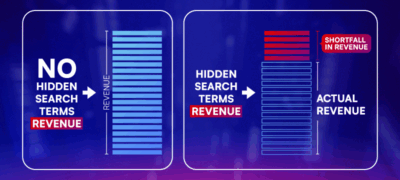
5 Learnings From Auditing Dozens of Meta Ad Accounts
At Taikun, we’ve audited dozens of Meta ad accounts in the past few months. The brands varied, but the patterns were…
At Taikun, we’ve audited dozens of Meta ad accounts in the past few months. The brands varied, but the patterns were strikingly similar. From over-engineered campaign structures to under-investment in new customer acquisition, the same pitfalls kept showing up.
Below are the five most common problems we uncovered, and the five highest-leverage actions we recommend to unlock scale and restore efficiency.
🔍 Top 5 Learnings From Recent Audits
1. Account Complexity Is Holding Back Performance
Many accounts are weighed down by sprawling campaign structures, bloated ad sets, and inconsistent naming conventions. This setup makes performance analysis harder and optimization slower, ultimately restricting growth.
2. Retargeting Is Over-Weighted
Accounts often allocate 40–60% of spend to retargeting, sometimes hitting frequencies of 15+ over 30 days. This drives up short-term ROAS but restricts reach and starves new customer acquisition.
3. Attribution Is Inflating Reported Results
Most accounts optimize toward 7DC1DV (7-day click, 1-day view). This masks underperformance on 7DC-only (click-only) attribution, inflating ROAS and hiding inefficiencies.
4. Creative Testing Lacks Consistency
Creative testing is often either chaotic or nonexistent with multiple concepts launched at once, no clear performance thresholds, and no iteration loop. Without a system, testing doesn’t lead to learning.
5. CPMs and Frequencies Are Rising, But Reach Isn’t
Cost per 1,000 impressions is up across the board, but reach isn’t increasing. Without upper funnel campaigns, this trend will continue, and efficiency will keep declining.
✅ Top 5 Actions To Drive Growth and Efficiency
1. Streamline the Account Structure
Consolidate campaigns, reduce duplication, and align budget and bid types with funnel stage and margin. A leaner structure leads to better learnings and faster decision-making.
2. Refocus on Net-New Customer Acquisition
Cut retargeting budgets to under 20%. Use stricter exclusion logic and shift spend to broad or interest-based campaigns aimed at reaching high-intent new audiences.
3. Optimize Based on 7-Day Click Attribution
Make scaling decisions using 7DC-only data. While ROAS may appear lower, it gives a more accurate view of which campaigns actually drive sales.
4. Use a Structured Creative Testing Framework
Launch one concept per ad set. Name consistently. Evaluate after a defined spend or impression threshold. Scale validated winners into ASC or Cost Cap campaigns.
5. Invest in Upper Funnel and Creator Partnerships
Allocate 5–10% of budget to awareness campaigns. Run Partnership Ads with creators to expand reach, diversify creative, and lower cost per acquisition over time.
Final Thoughts
Most Meta ad accounts aren’t underperforming due to one big issue, they’re suffering from the compound effect of several small inefficiencies. The good news is that these are all fixable. A tighter structure, clearer attribution, and more disciplined creative testing can radically change what’s possible.
If your growth has plateaued or your efficiency is slipping, there’s likely a structural reason behind it. Start here.
Related Articles

- PPC
The High Cost of Hidden Search Terms: How Google Skims Profit from Advertisers
Google claims that search terms are hidden for privacy reasons and not performance reasons, so we wanted to find out: Do…

- Paid Social
Found a Winning Ad? Here’s How to Iterate on It Properly
Let’s say you’ve finally cracked it. You launched a new concept, and it’s outperforming everything else in your account. ROAS is…

- Paid Social
The 3 Creative Brief Mistakes That Quietly Kill Ad Performance
At this stage, you’ve likely got your media buying dialed in. You’re testing hooks, angles, creative formats. You’re launching weekly. But…
How can we help you grow?



